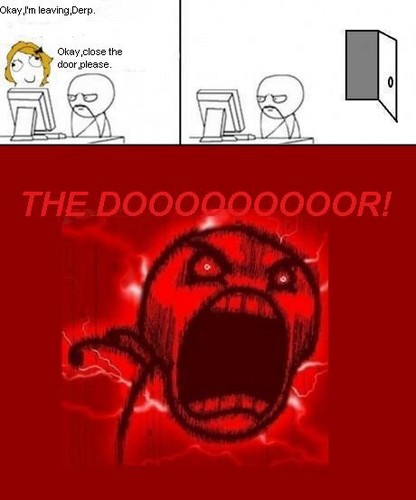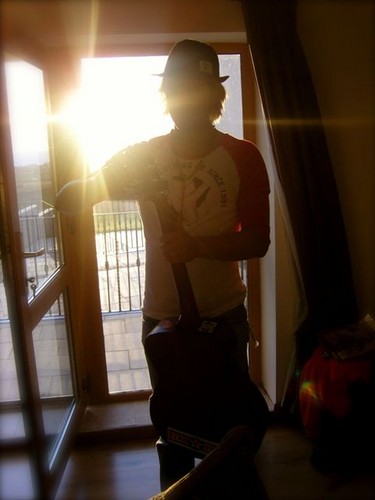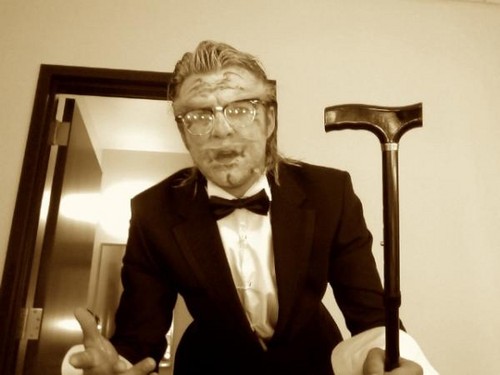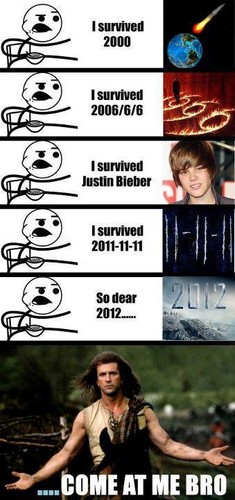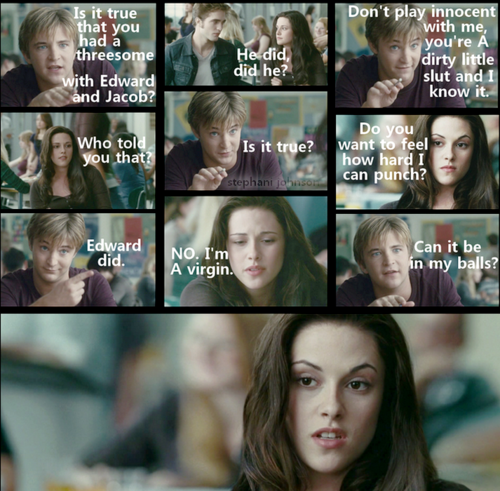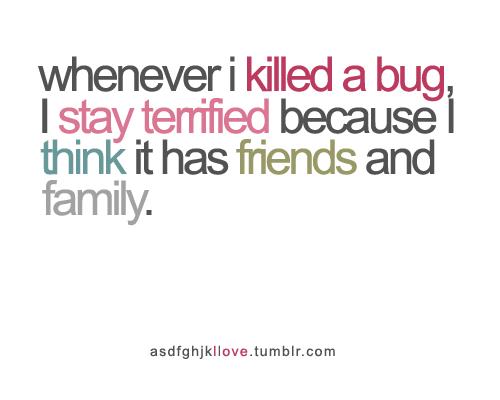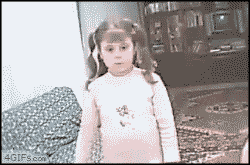What is it about fecundity that so appalls? Is it that with nature's bounty goes a crushing waste that threatens our own cheap lives?
bởi Annie Dillard
wakened myself last night with my own shouting. It must have been that terrible yellow plant I saw pushing through the flood-damp soil near the log bởi Tinker Creek, the plant as fleshy and featureless as a slug, that erupted through the floor of my brain as I slept, and burgeoned into the dream of fecundity that woke me up.
I was watching two huge luna moths mate. Luna moths are those fragile ghost moths, fairy moths, whose five-inch wings are swallow-tailed, a pastel green bordered in silken lavender. From the hairy head of the male sprouted two enormous, furry antennae that trailed down past his ethereal wings. He was on hàng đầu, đầu trang of the female, hunching repeatedly with a horrible animal vigor.
It was the perfect picture of utter spirituality and utter degradation. I was fascinated and could not turn away my eyes. bởi watching them I in effect permitted their mating to take place and so committed myself to accepting the consequences—all because I wanted to see what would happen. I wanted in on a secret.
And then the eggs hatched and the giường was full of fish. I was standing across the room in the doorway, staring at the bed. The eggs hatched before my eyes, on my bed, and a thousand chunky cá swarmed there in a viscid slime. The cá were firm and fat, black and white, with triangular bodies and bulging eyes. I watched in horror as they squirmed three feet deep, swimming and oozing about in the glistening, transparent slime. cá in the bed!—and I awoke. My ears still rang with the foreign cry that had been my own voice.
Fool, I thought: child, bạn child, bạn ignorant, innocent fool. What did bạn expect to see—angels? For it was understood in the dream that the giường full of cá was my own fault, that if I had turned away from the mating moths the hatching of their eggs wouldn't have happened, hoặc at least would have happened in secret, elsewhere. I brought it on myself, this slither, this swarm.
I don't know what it is about fecundity that so appalls. I suppose it is the teeming evidence that birth and growth, which we value, are ubiquitous and blind, that life itself is so astonishingly cheap, that nature is as careless as it is bountiful, and that with extravagance goes a crushing waste that will one ngày include our own cheap lives. Every glistening egg is a memento mori.
Now, in late June in the Blue Ridge, things are popping outside. Creatures extrude hoặc vent eggs; larvae fatten, chẻ, phân chia, split their shells, and eat them; spores dissolve hoặc explode; root hairs multiply, ngô puffs on the stalk, cỏ yields seed, shoots erupt from the earth turgid and sheathed; wet muskrats, rabbits, and squirrels slide into the sunlight, mewling and blind; and everywhere watery cells divide and swell, swell and divide. I can like it and call it birth and regeneration, hoặc I can play the devil's advocate and call it rank fecundity—and say that it's hell that's a-poppin'.
This is what I plan to do. Partly as a result of my terrible dream, I have been thinking that the landscape of the intricate world that I have cherished is inaccurate and lopsided. It's too optimistic. For the notion of the infinite variety of detail and the multiplicity of forms is a pleasing one; in complexity are the fringes of beauty, and in variety are generosity and exuberance. But all this leaves something vital out of the picture. It is not one monarch con bướm, bướm I see, but a thousand. I myself am not one, but legion. And we are all going to die.
In this repetition of individuals is a mindless stutter, an imbecilic fixedness that must be taken into account. The driving force behind all this fecundity is a terrible pressure I also must consider, the pressure of birth and growth, the pressure that squeezes out the egg and bursts the pupa, that hungers and lusts and drives the creature relentlessly toward its own death. Fecundity, then, is what I have been thinking about, fecundity and the pressure of growth. Fecundity is an ugly word for an ugly subject. It is ugly, at least, in the eggy animal world. I don't think it is for plants.
never met a man who was shaken bởi a field of identical blades of grass. An acre of poppies and a forest of làm dáng, vân sam, sam boggle no one's mind. Even ten square miles of wheat gladdens the hearts of most people, although it is really as unnatural and freakish as the Frankenstein monster; if man were to die, I read, wheat wouldn't survive him thêm than three years. No, in the plant world, and especially among the flowering plants, fecundity is not an assault on human values. Plants are not our competitors; they are our prey and our nesting materials. We are no thêm distressed at their proliferation than an owl is at a population explosion among field mice.
After the flood last năm I found a big cây uất kim hương, tulip cây limb that had been wind-thrown into Tinker Creek. The current dragged it up on some rocks on the bank, where receding waters stranded it. A tháng after the flood I discovered that it was growing new leaves. Both ends of the branch were completely exposed and dried. I was amazed. It was like the old fable about the corpse growing a beard; it was as if the woodpile in my nhà để xe were suddenly to burst greenly into leaf. The way plants persevere in the bitterest of circumstances is utterly heartening. I can barely keep from unconsciously ascribing a will to these plants, a do-or-die courage, and I have to remind myself that coded cells and mute water pressure have no idea how grandly they are flying in the teeth of it all.
In the lower Bronx, for example, enthusiasts found an ailanthus cây that was fifteen feet long growing from the corner of a nhà để xe roof. It was rooted in and living on "dust and roofing cinders." Even thêm spectacular is a desert plant, Ibervillea sonorae—a member of the gourd family—that Joseph Wood Krutch describes. If bạn see this plant in the desert, bạn see only a dried chunk of loose wood. It has neither roots nor stems; it's like an old gray knothole. But it is alive. Each năm before the rainy season comes, it sends out a few roots and shoots. If the rain arrives, it grows hoa and fruits; these soon wither away, and it reverts to a state as quiet as driftwood.
Well, the New York Botanical Garden put a dried Ibervillea sonorae on display in a glass case. "For seven years," says Joseph Wood Krutch, "without soil hoặc water, simply lying in the case, it put forth a few anticipatory shoots and then, when no rainy season arrived, dried up again, hoping for better luck tiếp theo year." That's what I call flying in the teeth of it all.
(It's hard to understand why no one at the New York Botanical Garden had the grace to splash a glass of water on the thing. Then they could say on their display case label, "This is a live plant." But bởi the eighth năm what they had was a dead plant, which is precisely what it had looked like all along. The sight of it, reinforced bởi the label, "Dead Ibervillea sonorae," would have been most melancholy to visitors. I suppose they just threw it away.)
The growth pressure of plants can do an impressive variety of tricks. Bamboo can grow three feet in twenty-four hours, an accomplishment that is capitalized upon, legendarily, in that exquisite Asian torture in which a victim is strapped to a mesh bunk a mere foot above a giường of healthy bamboo plants whose woodlike tips have been sharpened. For the first eight hours he is fine, if jittery; then he starts turning into a colander, bởi degrees.
Down at the root end of things, blind growth reaches astonishing proportions. So far as I know, only one real experiment has ever been performed to determine the extent and rate of root growth, and when bạn read the figures, bạn see why. I have run into various accounts of this experiment, and the only thing they don't reveal is how many lab assistants were blinded for life.
The experimenters studied a single cỏ plant, winter rye. They let it grow in a greenhouse for four months; then they gingerly spirited away the soil—under microscopes, I imagine—and counted and measured all the roots and root hairs. In four months the plant had set forth 378 miles of roots—that's about three miles a day—in 14 million distinct roots. This is mighty impressive, but when they get down to the root hairs, I boggle completely. In those same four months the rye plant created 14 billion root hairs, and those little things placed end to end just about wouldn't quit. In a single cubic inch of soil, the length of the root hairs totaled 6000 miles.
Other plants use water power to heave the rock earth around as though they were merely shrugging off a silken cape. Rutherford Platt tells about a larch cây whose root had cleft a one-and-a-half-ton boulder and hoisted it a foot into the air. Everyone knows how a sycamore root will buckle a sidewalk, a nấm will shatter a cement basement floor. But when the first real measurements of this awesome pressure were taken, nobody could believe the figures.
Rutherford Platt tells the story in The Great American Forest, one of the most interesting sách ever written:
In 1875, a Massachusetts farmer, curious about the growing power of expanding apples, melons, and squashes, harnessed a squash to a weight-lifting device which had a dial like a grocer's scale to indicate the pressure exerted bởi the expanding fruit. As the days passed, he kept piling on counterbalancing weight; he could hardly believe his eyes when he saw his vegetables quietly exerting a lifting force of 5 thousand pounds per square inch. When nobody believed him, he set up exhibits of harnessed squashes and invited the public to come and see. The Annual báo cáo of the Massachusetts Board of Agriculture, 1875, reported: "Many thousands of men, women, and children of all classes of society visited it. Mr. Penlow watched it ngày and night, making hourly observations; Professor Parker was moved to write a poem about it; Professor Seelye declared that he positively stood in awe of it."
All this is very jolly. Unless perhaps I were strapped down above a stand of growing, sharpened bamboo, I am unlikely to feel the faintest queasiness either about the growth pressure of plants hoặc their fecundity. Even when the plants get in the way of human "culture," I don't mind. When I read how many thousands of dollars a city like New York has to spend to keep underground water pipes free of ailanthus, ginko, and sycamore roots, I cannot help but give a little cheer. After all, water pipes are almost always an excellent nguồn of water. In a town where resourcefulness and beating the system are highly prized, these primitive trees can fight city hall and win.
But in the animal world things are different, and human feelings are different. While we're in New York, consider the cockroaches under the giường and the rats in the early morning clustered on the porch stoop. Apartment houses are hives of swarming roaches. hoặc again: in one sense bạn could think of Manhattan's land as high-rent, high-rise real estate; in another sense bạn could see it as an enormous breeding ground for rats, acres and acres of rats. I suppose that the cockroaches don't do as much actual damage as the roots do; nevertheless, the prospect does not please. Fecundity is anathema only in the animal. "Acres and acres of rats" has a suitably chilling ring to it that is decidedly lacking if I say instead "acres and acres of tulips."
he landscape of earth is dotted and smeared with masses of apparently identical individual animals, from the great Pleistocene herds that blanketed grasslands to the gluey gobs of bacteria that clog the lobes of lungs. The oceanic breeding grounds of pelagic birds are as teeming and cluttered as any human Calcutta. Lemmings blacken the earth and locusts the air. Grunion run thick in the ocean, corals pile on pile, and protozoans explode in a red tide stain. Ants take to the skies in swarms, mayflies hatch bởi the millions, and molting cicadas áo, áo khoác the trunks of trees. Have bạn seen the rivers run red and lumpy with salmon?
Consider the ordinary barnacle, the rock barnacle. Inside every one of those millions of hard white cones on the rocks—the kind that bruises your heel as bạn bruise its head—is of course a creature as alive as bạn hoặc me. Its business in life is this: when a wave washes over it, it sticks out twelve feathery feeding appendages and filters the plankton for food. As it grows, it sheds its skin like a lobster, enlarges its shell, and reproduces itself without end. The larvae "hatch into the sea in milky clouds." The barnacles encrusting a single half-mile of bờ biển can leak into the water a million million larvae. How many is that to a human mouthful? In sea water they grow, molt, change shape wildly, and eventually, after several months, settle on the rocks, turn into adults, and build shells. Inside the shells they have to shed their skins. Rachel Carson was always finding the old skins; she reported: "Almost every container of sea water I bring up from the bờ biển is flecked with white, semitransparent objects.... Seen under the microscope, every detail of structure is perfectly represented.... In the little cellophane-like replicas I can count the joints of the appendages; even the bristles, growing at the bases of the joints, seem to have been slipped out of their casings." All in all, rock barnacles may live four years.
My point about rock barnacles is those million million larvae "in milky clouds" and those shed flecks of skin. Sea water seems suddenly to be but a broth of barnacle bits. Can I fancy that a million million human infants are thêm real?
I have seen the mantis' abdomen dribbling out eggs in wet bubbles like tapioca bánh pudding glued to a thorn. I have seen a film of a termite Queen as big as my face, dead white and featureless, glistening with slime, throbbing and pulsing out rivers of globular eggs. Termite workers, who looked like tiny dock workers unloading the Queen Mary, licked each egg to prevent mold as fast as it was extruded. The whole world is an incubator for incalculable numbers of eggs, each one coded minutely and ready to burst.
The egg of a parasite chalcid fly, a common small fly, multiplies unassisted, making ever thêm identical eggs. The female lays a single fertilized egg in the flaccid tissues of its live prey, and that egg divides and divides. As many as 2000 new parasitic flies will hatch to feed on the host's body with identical hunger. Similarly—only thêm so—Edwin Way Teale reports that a lone aphid, without a partner, breeding "unmolested" for one year, would produce so many living aphids that, although they are only a tenth of an inch long, together they would extend into không gian 2500 light-years. Even the average goldfish lays 5000 eggs, which it will eat as fast as it lays, if permitted. The sales manager of Ozark Fisheries in Missouri, which raises commercial goldfish for the likes of me, said, "We produce, measure, and sell our product bởi the ton." The intricacy of goldfish and aphids multiplied mindlessly into tons and light-years is thêm than extravagance; it is holocaust, parody, glut.
The pressure of growth among động vật is a kind of terrible hunger. These billions must eat in order to fuel their surge to sexual maturity so that they may máy bơm out thêm billions of eggs. And what are the cá on the giường going to eat, hoặc hatched mantises in a Mason jar going to eat, but each other? There is a terrible innocence in the benumbed world of the lower animals, reducing life there to a universal chomp. Edwin Way Teale, in The Strange Lives of Familiar Insects—a book I couldn't live without—describes several occasions of meals mouthed under the pressure of a hunger that knew no bounds.
There is the dragonfly nymph, for instance, which stalks the bottom of the creek and the pond in tìm kiếm of live prey to snare with its hooked, unfolding lip. Dragonfly nymphs are insatiable and mighty. They clasp and devour whole minnows and fat tadpoles. "A dragonfly nymph," says Teale, "has even been seen climbing up out of the water on a plant to attack a helpless dragonfly emerging, soft and rumpled, from its nymphal skin." Is this where I draw the line?
It is between mothers and their offspring that these feedings have truly macabre overtones. Look at lacewings. Lacewings are those fragile green creatures with large, transparent wings. The larvae eat enormous numbers of aphids, the adults mate in a fluttering rush of instinct, lay eggs, and die bởi the millions in the first cold snap of fall. Sometimes, when a female lays her fertile eggs on a green leaf atop a slender stalked thread, she is hungry. She pauses in her laying, turns around, and eats her eggs one bởi one, then lays some more, and eats them, too.
Anything can happen, and anything does; what's it all about? Valerie Eliot, T. S. Eliot's widow, wrote in a letter to the Luân Đôn Times: "My husband, T. S. Eliot, loved to recount how late one evening he stopped a taxi. As he got in the driver said: 'You're T. S. Eliot.' When asked how he knew, he replied: 'Ah, I've got an eye for a celebrity. Only the other evening I picked up Bertrand Russell, and I đã đưa ý kiến to him, "Well, Lord Russell, what's it all about," and, do bạn know, he couldn't tell me.'" Well, Lord God, asks the delicate, dying lacewing whose mandibles are wet with the nước ép, nước trái cây secreted bởi her own ovipositor, what's it all about? ("And, do bạn know...")
lthough mothers devouring their own offspring is patently the thêm senseless, somehow the reverse behavior is the thêm appalling. In the death of the parent in the jaws of its offspring I recognize a universal drama that chance occurrence has merely telescoped, so that I can see all the players at once. Gall gnats, for instance, are common small flies. Sometimes, according to Teale, a gall gnat larva, which does not resemble the adult in the least, and has certainly not mated, nevertheless produces within its body eggs, live eggs, which then hatch within its soft tissues. Sometimes the eggs hatch alive even within the quiescent body of the pupa. The same incredible thing occasionally occurs within the genus Miastor, again to both larvae and pupae. "These eggs hatch within their bodies and the ravenous larvae which emerge immediately begin devouring their parents." In this case, I know what it's all about, and I wish I didn't. The parents die, the tiếp theo generation lives, ad majorem gloriam, and so it goes.
bạn are an ichneumon wasp. bạn mated and your eggs are fertile. If bạn can't see a sâu bướm on which to lay your eggs, your young will starve. When the eggs hatch, the young will eat any body in which they find themselves, so if bạn don't kill them bởi emitting them broadcast over the landscape, they'll eat bạn alive. But if bạn let them drop over the fields bạn will probably be dead yourself, of old age, before they even hatch to starve, and the whole hiển thị will be over and done, and a wretched one it was. bạn feel them coming, and coming, and bạn struggle to rise....
Not that the ichneumon ong vò vẻ, wasp is making any conscious choice. If she were, her dilemma would be truly the stuff of tragedy; Aeschylus need have looked no further than the ichneumon. That is, it would be the stuff of real tragedy if only Aeschylus and I could convince bạn that the ichneumon is really and truly as alive as we are, and that what happens to it matters. Will bạn take it on faith?
Here is one last story. It shows that the pressures of growth "gang aft a-gley." The clothes moth, whose sâu bướm eats wool, sometimes goes into a molting frenzy that Teale describes as "curious." "A curious paradox in molting is the action of a clothes-moth larva with insufficient food. It sometimes goes into a 'molting frenzy,' changing its skin repeatedly and getting smaller and smaller with each change." Smaller and smaller ... can bạn imagine the frenzy? Where shall we send our sweaters? The diminution process could, in imagination, extend to infinity, as the creature frantically shrinks and shrinks and shrinks to the size of a molecule, then an electron, but never can shrink to absolute nothing and end its terrible hunger. I feel like Ezra: "And when I heard this thing, I rent my quần áo, may mặc and my mantle, and plucked off the hair of my head and of my beard, and sat down astonied."
am not kidding anyone if I pretend that these awesome pressures to eat and breed are wholly mystifying. The million million barnacle larvae in a half-mile of bờ biển water, the rivers of termite eggs, and the light-years of aphids ensure the living presence, in a scarcely concerned world, of ever thêm rock barnacles, termites, and aphids.
It's chancy out there. Dog whelks eat rock barnacles, worms invade their shells, bờ biển ice razes them from the rocks and grinds them to a powder. Can bạn lay aphid eggs faster than chickadees can eat them? Can bạn find a caterpillar, can bạn beat the killing frost?
As far as lower động vật go, if bạn lead a simple life bạn probably face a boring death. Some animals, however, lead such complicated lives that not only do the chances for any one animal's death at any một phút multiply greatly but so also do the varieties of the deaths it might die. The ordained paths of some động vật are so rocky they are preposterous. The horsehair worm in the con vịt, vịt pond, for instance, wriggling so serenely near the surface, is the survivor of an impossible series of squeaky escapes. I did a bit of research into the life cycles of these worms, which are shaped exactly like hairs from a horse's tail, and learned that although scientists are not exactly sure what happens to any one species of them, they think it might go something like this:
bạn start with long strands of eggs wrapped around vegetation in the con vịt, vịt pond. The eggs hatch, the larvae emerge, and each seeks an aquatic host, say a dragonfly nymph. The larva bores into the nymph's body, where it feeds and grows and somehow escapes. Then if it doesn't get eaten, it swims over to the bờ biển where it encysts on submersed plants. This is all fairly improbable, but not impossibly so.
Now the coincidences begin. First, presumably, the water level of the con vịt, vịt pond has to drop. This exposes the vegetation so that the land host organism can get at it without drowning. Horsehair worms have various land hosts, such as crickets, beetles, and grasshoppers. Let's say ours can only make it if a con châu chấu, cây châu chấu, châu chấu comes along. Fine. But the con châu chấu, cây châu chấu, châu chấu had best hurry, for there is only so much fat stored in the encysted worm, and it might starve. Well, here comes just the right species of grasshopper, and it is obligingly feeding on bờ biển vegetation. Now I have not observed any extensive grazing of grasshoppers on any grassy shores, but obviously it must occur. Bingo, then, the con châu chấu, cây châu chấu, châu chấu just happens to eat the encysted worm.
The cyst bursts. The worm emerges in all its hideous length, up to thirty-six inches, inside the body of the grasshopper, on which it feeds. I presume that the worm must eat enough of its host to stay alive, but not so much that the con châu chấu, cây châu chấu, châu chấu will keel over dead far from water. Entomologists have found tiger beetles dead and dying on the water whose insides were almost perfectly empty except for the white, coiled bodies of horsehair worms. At any rate, now the worm is almost an adult, ready to reproduce. But first it's got to get out of this grasshopper.
Biologists don't know what happens next. If at the critical stage the con châu chấu, cây châu chấu, châu chấu is hopping in a sunny meadow away from a con vịt, vịt pond hoặc ditch, which is entirely likely, then the story is over. But say it happens to be feeding near the con vịt, vịt pond. The worm perhaps bores its way out of the grasshopper's body, hoặc perhaps is excreted. At any rate, there it is on the grass, drying out. Now some biologists have to go so far as to invoke a "heavy rain," falling from heaven at this fortuitous moment, in order to get the horsehair worm back into the water where it can mate and lay thêm seemingly doomed eggs. You'd be thin, too.
Other creatures have it just about as easy. A blood fluke starts out as an egg in human feces. If it happens to fall into fresh water, it will live only if it happens to encounter a certain. species of snail. It changes in the snail, swims out, and now needs to find a human being in the water in order to bore through his skin. It travels around in the man's blood, settles down in the blood vessels of his intestine, and turns into a sexually mature blood fluke, either male hoặc female. Now it has to find another fluke, of the opposite sex, which also just happens to have traveled the same circuitous route and landed in the same unfortunate man's intestinal blood vessels. Other flukes lead similarly improbable lives, some passing through as many as four hosts.
But it is for gooseneck barnacles that I reserve the largest measure of awe. Recently I saw photographs taken bởi members of the Ra expedition. One showed a glob of tar as big as a softball, jetsam from a larger craft, which Heyerdahl and his crew spotted in the middle of the Atlantic Ocean. The tar had been in the sea for a long time; it was overgrown with gooseneck barnacles. The gooseneck barnacles were entirely incidental, but for me they were the most interesting thing about the whole expedition. How many gooseneck barnacle larvae must be dying out there in the middle of vast oceans for every one that finds a glob of tar to fasten to? You've seen gooseneck barnacles washed up on the beach; they grow on old ship's timber, driftwood, strips of rubber—anything that's been afloat in the sea long enough. They do not resemble rock barnacles in the least, although the two are closely related. They have pinkish shells extending in a flattened oval from a flexible bit of "gooseneck" tissue that secures them to the substratum.
I have always had a fancy for these creatures, but I'd always assumed that they lived near shores, where chance floating holdfasts, are thêm likely to occur. What are they doing—what are the larvae doing—out there in the middle of the ocean? They drift and perish, or, bởi some freak accident in a world where anything can happen, they latch and flourish. If I dangled my hand from the deck of the Ra into the sea, could a gooseneck barnacle fasten there? If I gathered a cup of ocean water, would I be holding a score of dying and dead barnacle larvae? Should I throw them a chip? What kind of a world is this, anyway? Why not make fewer barnacle larvae and give them a decent chance? Are we dealing in life, hoặc in death?
have to look at the landscape of the blue-green world again. Just think: in all the clean, beautiful reaches of the solar system, our planet alone is a blot; our planet alone has death. I have to acknowledge that the sea is a cup of death and the land is a stained altar stone. We the living are survivors huddled on flotsam, living on jetsam. We are escapees. We wake in terror, eat in hunger, sleep with a mouthful of blood.
The faster death goes, the faster evolution goes. If an aphid lays a million eggs, several might survive. Now, my right hand, in all its human cunning, could not make one aphid in a thousand years. But these aphid eggs—which run less than a dime a dozen, which run absolutely free—can make aphids as effortlessly as the sea makes waves. Wonderful things, wasted. It's a wretched system.
Any three-year-old can see how unsatisfactory and clumsy is this whole business of reproducing and dying bởi the billions. We have not yet encountered any god who is as merciful as a man who flicks a beetle over on its feet. There is not a people in the world that behaves as badly as praying mantises. But wait, bạn say, there is no right and wrong in nature; right and wrong is a human concept. Precisely: we are moral creatures, then, in an amoral world. The universe that suckled us is a monster that does not care if we live hoặc die—does not care if it itself grinds to a halt. It is fixed and blind, a robot programmed to kill. We are free and seeing; we can only try to outwit it at every turn to save our skins.
This view requires that a monstrous world running on chance and death, careening blindly from nowhere to nowhere, somehow produced wonderful us. I came from the world, I crawled out of a sea of amino acids, and now I must whirl around and shake my fist at that sea, and cry Shame! If I value anything at all, then I must blindfold my eyes when I near the randomly shaped Swiss Alps. We must as a culture disassemble our telescopes and settle down to backslapping. We little blobs of soft tissue crawling around on this one planet's skin are right, and the whole universe is wrong.
hoặc consider the alternative.
Julian of Norwich, the great English anchorite and theologian, cited, in the manner of the prophets, these words from God: "See, I am God: see, I am in all things: see, I never lift my hands off my works, nor ever shall, without end.... How should anything be amiss?" But now not even the simplest and best of us sees things the way Julian did. It seems to us that plenty is amiss. So much is amiss that I must consider the một giây fork in the road, that creation itself is blamelessly, benevolently askew bởi its very free nature, and that it is only human feeling that is freakishly amiss. The frog I saw being sucked bởi a giant water bug had, presumably, a rush of pure feeling for about a second, before its brain turned to broth. I, however, have been sapped bởi various strong feelings about the incident almost every ngày for several years.
Do the barnacle larvae care? Does the lacewing who eats her eggs care? If they do not care, then why am I making all this fuss? If I am a freak, then why don't I hush?
Our excessive emotions are so patently painful and harmful to us as a species that I can hardly believe that they evolved. Other creatures manage to have effective matings and even stable societies without great emotions, and they have a bonus in that they need not ever mourn. (But some higher động vật have emotions that we think are similar to ours: dogs, elephants, otters, and the sea mammals mourn their dead. Why do that to an otter? What creator could be so cruel, not to kill otters, but to let them care?) It would seem that emotions are the curse, not death—emotions that appear to have devolved upon a few freaks as a special curse from Malevolence.
All right then. It is our emotions that are amiss. We are freaks, the world is fine, and let us all go have lobotomies to restore us to a natural state. We can leave the thư viện then, go back to the creek lobotomized, and live on its banks as untroubled as any muskrat hoặc reed. bạn first.
Of the two ridiculous alternatives, I rather favor the second. Although it is true that we are moral creatures in an amoral world, the world's amorality does not make it a monster. Rather, I am the freak. Perhaps I don't need a lobotomy, but I could use some calming down, and Tinker Creek is just the place for it. I must go down to the creek again. It is where I belong, although as I become closer to it, my fellows appear thêm and thêm freakish, and my trang chủ in the thư viện thêm and thêm limited. Imperceptibly at first, and now consciously, I shy away from the arts, from the human emotional stew. I read what the men with telescopes and microscopes have to say about the landscape, I read about the polar ice, and I drive myself deeper and deeper into exile from my own kind. But, since I cannot avoid the thư viện altogether—the human culture that taught me to speak in its tongue—I bring human values to the creek, and so save myself from being brutalized.
What I have been after all along is not an explanation but a picture. This is the way the world is, altar and cup, lit bởi the ngọn lửa, chữa cháy from a ngôi sao that has only begun to die. My rage and shock at the pain and death of individuals of my kind is the old, old mystery, as old as man, but forever fresh, and completely unanswerable. My reservations about the fecundity and waste of life among other creatures are, however, mere squeamishness. After all, I'm the one having the nightmares. It is true that many of the creatures live and die abominably, but I am not called upon to pass judgment. Nor am I called upon to live in that same way, and those creatures who are are mercifully unconscious.
The picture of fecundity and its excesses and of the pressures of growth and its accidents is of course no different from the picture I have long cherished of the world as an intricate texture of a bizarre variety of forms. Only now the shadows are deeper. Extravagance takes on a sinister, wastrel air, and exuberance blithers. When I added the dimension of time to the landscape of the world, I saw how freedom grew the beauties and horrors from the same live branch. This landscape is the same as that one, with a few thêm details added, and a different emphasis. Instead of one goldfish swimming in its intricate bowl, I see tons and tons of goldfish laying and eating billions and billions of eggs. The point of all the eggs is of course to make goldfish one bởi one—nature loves the idea of the individual, if not the individual himself—and the point of a goldfish is pizazz. This is familiar ground. I merely failed to acknowledge that it is death that is spinning the globe.
It is harder to take, but surely it's been thought about. I cannot really get very exercised over the hideous appearance and habits of some deep-sea jellies and fishes, and I exercise easy. But about the topic of my own death I am decidedly touchy. Nevertheless, the two phenomena are two branches of the same creek, the creek that waters the world. Its nguồn is freedom, and its network of branches is infinite. The graceful mockingbird that falls drinks there and sips in the same drop a beauty that waters its eyes and a death that fledges and flies. The petals of tulips are flaps of the same doomed water that swells and hatches in the ichneumon's gut.
That something is everywhere and always amiss is part of the very stuff of creation. It is as though each clay form had baked into it, fired into it, a blue streak of nonbeing, a shaded emptiness like a bubble that not only shapes its very structure but that also causes it to danh sách and ultimately explode. We could have planned things thêm mercifully, perhaps, but our plan would never get off the drawing board until we agreed to the very compromising terms that are the only ones that being offers.
The world has signed a pact with the devil; it had to. It is a covenant to which every thing, even every hydrogen atom, is bound. The terms are clear: if bạn want to live, bạn have to die; bạn cannot have mountains and creeks without space, and không gian is a beauty married to a blind man. The blind man is Freedom, hoặc Time, and he does not go anywhere without his great dog Death. The world came into being with the signing of the contract. A scientist calls it the một giây Law of Thermodynamics. A poet says, "The force that through the green fuse drives the flower/ Drives my green age." This is what we know. The rest is gravy.
bởi Annie Dillard
wakened myself last night with my own shouting. It must have been that terrible yellow plant I saw pushing through the flood-damp soil near the log bởi Tinker Creek, the plant as fleshy and featureless as a slug, that erupted through the floor of my brain as I slept, and burgeoned into the dream of fecundity that woke me up.
I was watching two huge luna moths mate. Luna moths are those fragile ghost moths, fairy moths, whose five-inch wings are swallow-tailed, a pastel green bordered in silken lavender. From the hairy head of the male sprouted two enormous, furry antennae that trailed down past his ethereal wings. He was on hàng đầu, đầu trang of the female, hunching repeatedly with a horrible animal vigor.
It was the perfect picture of utter spirituality and utter degradation. I was fascinated and could not turn away my eyes. bởi watching them I in effect permitted their mating to take place and so committed myself to accepting the consequences—all because I wanted to see what would happen. I wanted in on a secret.
And then the eggs hatched and the giường was full of fish. I was standing across the room in the doorway, staring at the bed. The eggs hatched before my eyes, on my bed, and a thousand chunky cá swarmed there in a viscid slime. The cá were firm and fat, black and white, with triangular bodies and bulging eyes. I watched in horror as they squirmed three feet deep, swimming and oozing about in the glistening, transparent slime. cá in the bed!—and I awoke. My ears still rang with the foreign cry that had been my own voice.
Fool, I thought: child, bạn child, bạn ignorant, innocent fool. What did bạn expect to see—angels? For it was understood in the dream that the giường full of cá was my own fault, that if I had turned away from the mating moths the hatching of their eggs wouldn't have happened, hoặc at least would have happened in secret, elsewhere. I brought it on myself, this slither, this swarm.
I don't know what it is about fecundity that so appalls. I suppose it is the teeming evidence that birth and growth, which we value, are ubiquitous and blind, that life itself is so astonishingly cheap, that nature is as careless as it is bountiful, and that with extravagance goes a crushing waste that will one ngày include our own cheap lives. Every glistening egg is a memento mori.
Now, in late June in the Blue Ridge, things are popping outside. Creatures extrude hoặc vent eggs; larvae fatten, chẻ, phân chia, split their shells, and eat them; spores dissolve hoặc explode; root hairs multiply, ngô puffs on the stalk, cỏ yields seed, shoots erupt from the earth turgid and sheathed; wet muskrats, rabbits, and squirrels slide into the sunlight, mewling and blind; and everywhere watery cells divide and swell, swell and divide. I can like it and call it birth and regeneration, hoặc I can play the devil's advocate and call it rank fecundity—and say that it's hell that's a-poppin'.
This is what I plan to do. Partly as a result of my terrible dream, I have been thinking that the landscape of the intricate world that I have cherished is inaccurate and lopsided. It's too optimistic. For the notion of the infinite variety of detail and the multiplicity of forms is a pleasing one; in complexity are the fringes of beauty, and in variety are generosity and exuberance. But all this leaves something vital out of the picture. It is not one monarch con bướm, bướm I see, but a thousand. I myself am not one, but legion. And we are all going to die.
In this repetition of individuals is a mindless stutter, an imbecilic fixedness that must be taken into account. The driving force behind all this fecundity is a terrible pressure I also must consider, the pressure of birth and growth, the pressure that squeezes out the egg and bursts the pupa, that hungers and lusts and drives the creature relentlessly toward its own death. Fecundity, then, is what I have been thinking about, fecundity and the pressure of growth. Fecundity is an ugly word for an ugly subject. It is ugly, at least, in the eggy animal world. I don't think it is for plants.
never met a man who was shaken bởi a field of identical blades of grass. An acre of poppies and a forest of làm dáng, vân sam, sam boggle no one's mind. Even ten square miles of wheat gladdens the hearts of most people, although it is really as unnatural and freakish as the Frankenstein monster; if man were to die, I read, wheat wouldn't survive him thêm than three years. No, in the plant world, and especially among the flowering plants, fecundity is not an assault on human values. Plants are not our competitors; they are our prey and our nesting materials. We are no thêm distressed at their proliferation than an owl is at a population explosion among field mice.
After the flood last năm I found a big cây uất kim hương, tulip cây limb that had been wind-thrown into Tinker Creek. The current dragged it up on some rocks on the bank, where receding waters stranded it. A tháng after the flood I discovered that it was growing new leaves. Both ends of the branch were completely exposed and dried. I was amazed. It was like the old fable about the corpse growing a beard; it was as if the woodpile in my nhà để xe were suddenly to burst greenly into leaf. The way plants persevere in the bitterest of circumstances is utterly heartening. I can barely keep from unconsciously ascribing a will to these plants, a do-or-die courage, and I have to remind myself that coded cells and mute water pressure have no idea how grandly they are flying in the teeth of it all.
In the lower Bronx, for example, enthusiasts found an ailanthus cây that was fifteen feet long growing from the corner of a nhà để xe roof. It was rooted in and living on "dust and roofing cinders." Even thêm spectacular is a desert plant, Ibervillea sonorae—a member of the gourd family—that Joseph Wood Krutch describes. If bạn see this plant in the desert, bạn see only a dried chunk of loose wood. It has neither roots nor stems; it's like an old gray knothole. But it is alive. Each năm before the rainy season comes, it sends out a few roots and shoots. If the rain arrives, it grows hoa and fruits; these soon wither away, and it reverts to a state as quiet as driftwood.
Well, the New York Botanical Garden put a dried Ibervillea sonorae on display in a glass case. "For seven years," says Joseph Wood Krutch, "without soil hoặc water, simply lying in the case, it put forth a few anticipatory shoots and then, when no rainy season arrived, dried up again, hoping for better luck tiếp theo year." That's what I call flying in the teeth of it all.
(It's hard to understand why no one at the New York Botanical Garden had the grace to splash a glass of water on the thing. Then they could say on their display case label, "This is a live plant." But bởi the eighth năm what they had was a dead plant, which is precisely what it had looked like all along. The sight of it, reinforced bởi the label, "Dead Ibervillea sonorae," would have been most melancholy to visitors. I suppose they just threw it away.)
The growth pressure of plants can do an impressive variety of tricks. Bamboo can grow three feet in twenty-four hours, an accomplishment that is capitalized upon, legendarily, in that exquisite Asian torture in which a victim is strapped to a mesh bunk a mere foot above a giường of healthy bamboo plants whose woodlike tips have been sharpened. For the first eight hours he is fine, if jittery; then he starts turning into a colander, bởi degrees.
Down at the root end of things, blind growth reaches astonishing proportions. So far as I know, only one real experiment has ever been performed to determine the extent and rate of root growth, and when bạn read the figures, bạn see why. I have run into various accounts of this experiment, and the only thing they don't reveal is how many lab assistants were blinded for life.
The experimenters studied a single cỏ plant, winter rye. They let it grow in a greenhouse for four months; then they gingerly spirited away the soil—under microscopes, I imagine—and counted and measured all the roots and root hairs. In four months the plant had set forth 378 miles of roots—that's about three miles a day—in 14 million distinct roots. This is mighty impressive, but when they get down to the root hairs, I boggle completely. In those same four months the rye plant created 14 billion root hairs, and those little things placed end to end just about wouldn't quit. In a single cubic inch of soil, the length of the root hairs totaled 6000 miles.
Other plants use water power to heave the rock earth around as though they were merely shrugging off a silken cape. Rutherford Platt tells about a larch cây whose root had cleft a one-and-a-half-ton boulder and hoisted it a foot into the air. Everyone knows how a sycamore root will buckle a sidewalk, a nấm will shatter a cement basement floor. But when the first real measurements of this awesome pressure were taken, nobody could believe the figures.
Rutherford Platt tells the story in The Great American Forest, one of the most interesting sách ever written:
In 1875, a Massachusetts farmer, curious about the growing power of expanding apples, melons, and squashes, harnessed a squash to a weight-lifting device which had a dial like a grocer's scale to indicate the pressure exerted bởi the expanding fruit. As the days passed, he kept piling on counterbalancing weight; he could hardly believe his eyes when he saw his vegetables quietly exerting a lifting force of 5 thousand pounds per square inch. When nobody believed him, he set up exhibits of harnessed squashes and invited the public to come and see. The Annual báo cáo of the Massachusetts Board of Agriculture, 1875, reported: "Many thousands of men, women, and children of all classes of society visited it. Mr. Penlow watched it ngày and night, making hourly observations; Professor Parker was moved to write a poem about it; Professor Seelye declared that he positively stood in awe of it."
All this is very jolly. Unless perhaps I were strapped down above a stand of growing, sharpened bamboo, I am unlikely to feel the faintest queasiness either about the growth pressure of plants hoặc their fecundity. Even when the plants get in the way of human "culture," I don't mind. When I read how many thousands of dollars a city like New York has to spend to keep underground water pipes free of ailanthus, ginko, and sycamore roots, I cannot help but give a little cheer. After all, water pipes are almost always an excellent nguồn of water. In a town where resourcefulness and beating the system are highly prized, these primitive trees can fight city hall and win.
But in the animal world things are different, and human feelings are different. While we're in New York, consider the cockroaches under the giường and the rats in the early morning clustered on the porch stoop. Apartment houses are hives of swarming roaches. hoặc again: in one sense bạn could think of Manhattan's land as high-rent, high-rise real estate; in another sense bạn could see it as an enormous breeding ground for rats, acres and acres of rats. I suppose that the cockroaches don't do as much actual damage as the roots do; nevertheless, the prospect does not please. Fecundity is anathema only in the animal. "Acres and acres of rats" has a suitably chilling ring to it that is decidedly lacking if I say instead "acres and acres of tulips."
he landscape of earth is dotted and smeared with masses of apparently identical individual animals, from the great Pleistocene herds that blanketed grasslands to the gluey gobs of bacteria that clog the lobes of lungs. The oceanic breeding grounds of pelagic birds are as teeming and cluttered as any human Calcutta. Lemmings blacken the earth and locusts the air. Grunion run thick in the ocean, corals pile on pile, and protozoans explode in a red tide stain. Ants take to the skies in swarms, mayflies hatch bởi the millions, and molting cicadas áo, áo khoác the trunks of trees. Have bạn seen the rivers run red and lumpy with salmon?
Consider the ordinary barnacle, the rock barnacle. Inside every one of those millions of hard white cones on the rocks—the kind that bruises your heel as bạn bruise its head—is of course a creature as alive as bạn hoặc me. Its business in life is this: when a wave washes over it, it sticks out twelve feathery feeding appendages and filters the plankton for food. As it grows, it sheds its skin like a lobster, enlarges its shell, and reproduces itself without end. The larvae "hatch into the sea in milky clouds." The barnacles encrusting a single half-mile of bờ biển can leak into the water a million million larvae. How many is that to a human mouthful? In sea water they grow, molt, change shape wildly, and eventually, after several months, settle on the rocks, turn into adults, and build shells. Inside the shells they have to shed their skins. Rachel Carson was always finding the old skins; she reported: "Almost every container of sea water I bring up from the bờ biển is flecked with white, semitransparent objects.... Seen under the microscope, every detail of structure is perfectly represented.... In the little cellophane-like replicas I can count the joints of the appendages; even the bristles, growing at the bases of the joints, seem to have been slipped out of their casings." All in all, rock barnacles may live four years.
My point about rock barnacles is those million million larvae "in milky clouds" and those shed flecks of skin. Sea water seems suddenly to be but a broth of barnacle bits. Can I fancy that a million million human infants are thêm real?
I have seen the mantis' abdomen dribbling out eggs in wet bubbles like tapioca bánh pudding glued to a thorn. I have seen a film of a termite Queen as big as my face, dead white and featureless, glistening with slime, throbbing and pulsing out rivers of globular eggs. Termite workers, who looked like tiny dock workers unloading the Queen Mary, licked each egg to prevent mold as fast as it was extruded. The whole world is an incubator for incalculable numbers of eggs, each one coded minutely and ready to burst.
The egg of a parasite chalcid fly, a common small fly, multiplies unassisted, making ever thêm identical eggs. The female lays a single fertilized egg in the flaccid tissues of its live prey, and that egg divides and divides. As many as 2000 new parasitic flies will hatch to feed on the host's body with identical hunger. Similarly—only thêm so—Edwin Way Teale reports that a lone aphid, without a partner, breeding "unmolested" for one year, would produce so many living aphids that, although they are only a tenth of an inch long, together they would extend into không gian 2500 light-years. Even the average goldfish lays 5000 eggs, which it will eat as fast as it lays, if permitted. The sales manager of Ozark Fisheries in Missouri, which raises commercial goldfish for the likes of me, said, "We produce, measure, and sell our product bởi the ton." The intricacy of goldfish and aphids multiplied mindlessly into tons and light-years is thêm than extravagance; it is holocaust, parody, glut.
The pressure of growth among động vật is a kind of terrible hunger. These billions must eat in order to fuel their surge to sexual maturity so that they may máy bơm out thêm billions of eggs. And what are the cá on the giường going to eat, hoặc hatched mantises in a Mason jar going to eat, but each other? There is a terrible innocence in the benumbed world of the lower animals, reducing life there to a universal chomp. Edwin Way Teale, in The Strange Lives of Familiar Insects—a book I couldn't live without—describes several occasions of meals mouthed under the pressure of a hunger that knew no bounds.
There is the dragonfly nymph, for instance, which stalks the bottom of the creek and the pond in tìm kiếm of live prey to snare with its hooked, unfolding lip. Dragonfly nymphs are insatiable and mighty. They clasp and devour whole minnows and fat tadpoles. "A dragonfly nymph," says Teale, "has even been seen climbing up out of the water on a plant to attack a helpless dragonfly emerging, soft and rumpled, from its nymphal skin." Is this where I draw the line?
It is between mothers and their offspring that these feedings have truly macabre overtones. Look at lacewings. Lacewings are those fragile green creatures with large, transparent wings. The larvae eat enormous numbers of aphids, the adults mate in a fluttering rush of instinct, lay eggs, and die bởi the millions in the first cold snap of fall. Sometimes, when a female lays her fertile eggs on a green leaf atop a slender stalked thread, she is hungry. She pauses in her laying, turns around, and eats her eggs one bởi one, then lays some more, and eats them, too.
Anything can happen, and anything does; what's it all about? Valerie Eliot, T. S. Eliot's widow, wrote in a letter to the Luân Đôn Times: "My husband, T. S. Eliot, loved to recount how late one evening he stopped a taxi. As he got in the driver said: 'You're T. S. Eliot.' When asked how he knew, he replied: 'Ah, I've got an eye for a celebrity. Only the other evening I picked up Bertrand Russell, and I đã đưa ý kiến to him, "Well, Lord Russell, what's it all about," and, do bạn know, he couldn't tell me.'" Well, Lord God, asks the delicate, dying lacewing whose mandibles are wet with the nước ép, nước trái cây secreted bởi her own ovipositor, what's it all about? ("And, do bạn know...")
lthough mothers devouring their own offspring is patently the thêm senseless, somehow the reverse behavior is the thêm appalling. In the death of the parent in the jaws of its offspring I recognize a universal drama that chance occurrence has merely telescoped, so that I can see all the players at once. Gall gnats, for instance, are common small flies. Sometimes, according to Teale, a gall gnat larva, which does not resemble the adult in the least, and has certainly not mated, nevertheless produces within its body eggs, live eggs, which then hatch within its soft tissues. Sometimes the eggs hatch alive even within the quiescent body of the pupa. The same incredible thing occasionally occurs within the genus Miastor, again to both larvae and pupae. "These eggs hatch within their bodies and the ravenous larvae which emerge immediately begin devouring their parents." In this case, I know what it's all about, and I wish I didn't. The parents die, the tiếp theo generation lives, ad majorem gloriam, and so it goes.
bạn are an ichneumon wasp. bạn mated and your eggs are fertile. If bạn can't see a sâu bướm on which to lay your eggs, your young will starve. When the eggs hatch, the young will eat any body in which they find themselves, so if bạn don't kill them bởi emitting them broadcast over the landscape, they'll eat bạn alive. But if bạn let them drop over the fields bạn will probably be dead yourself, of old age, before they even hatch to starve, and the whole hiển thị will be over and done, and a wretched one it was. bạn feel them coming, and coming, and bạn struggle to rise....
Not that the ichneumon ong vò vẻ, wasp is making any conscious choice. If she were, her dilemma would be truly the stuff of tragedy; Aeschylus need have looked no further than the ichneumon. That is, it would be the stuff of real tragedy if only Aeschylus and I could convince bạn that the ichneumon is really and truly as alive as we are, and that what happens to it matters. Will bạn take it on faith?
Here is one last story. It shows that the pressures of growth "gang aft a-gley." The clothes moth, whose sâu bướm eats wool, sometimes goes into a molting frenzy that Teale describes as "curious." "A curious paradox in molting is the action of a clothes-moth larva with insufficient food. It sometimes goes into a 'molting frenzy,' changing its skin repeatedly and getting smaller and smaller with each change." Smaller and smaller ... can bạn imagine the frenzy? Where shall we send our sweaters? The diminution process could, in imagination, extend to infinity, as the creature frantically shrinks and shrinks and shrinks to the size of a molecule, then an electron, but never can shrink to absolute nothing and end its terrible hunger. I feel like Ezra: "And when I heard this thing, I rent my quần áo, may mặc and my mantle, and plucked off the hair of my head and of my beard, and sat down astonied."
am not kidding anyone if I pretend that these awesome pressures to eat and breed are wholly mystifying. The million million barnacle larvae in a half-mile of bờ biển water, the rivers of termite eggs, and the light-years of aphids ensure the living presence, in a scarcely concerned world, of ever thêm rock barnacles, termites, and aphids.
It's chancy out there. Dog whelks eat rock barnacles, worms invade their shells, bờ biển ice razes them from the rocks and grinds them to a powder. Can bạn lay aphid eggs faster than chickadees can eat them? Can bạn find a caterpillar, can bạn beat the killing frost?
As far as lower động vật go, if bạn lead a simple life bạn probably face a boring death. Some animals, however, lead such complicated lives that not only do the chances for any one animal's death at any một phút multiply greatly but so also do the varieties of the deaths it might die. The ordained paths of some động vật are so rocky they are preposterous. The horsehair worm in the con vịt, vịt pond, for instance, wriggling so serenely near the surface, is the survivor of an impossible series of squeaky escapes. I did a bit of research into the life cycles of these worms, which are shaped exactly like hairs from a horse's tail, and learned that although scientists are not exactly sure what happens to any one species of them, they think it might go something like this:
bạn start with long strands of eggs wrapped around vegetation in the con vịt, vịt pond. The eggs hatch, the larvae emerge, and each seeks an aquatic host, say a dragonfly nymph. The larva bores into the nymph's body, where it feeds and grows and somehow escapes. Then if it doesn't get eaten, it swims over to the bờ biển where it encysts on submersed plants. This is all fairly improbable, but not impossibly so.
Now the coincidences begin. First, presumably, the water level of the con vịt, vịt pond has to drop. This exposes the vegetation so that the land host organism can get at it without drowning. Horsehair worms have various land hosts, such as crickets, beetles, and grasshoppers. Let's say ours can only make it if a con châu chấu, cây châu chấu, châu chấu comes along. Fine. But the con châu chấu, cây châu chấu, châu chấu had best hurry, for there is only so much fat stored in the encysted worm, and it might starve. Well, here comes just the right species of grasshopper, and it is obligingly feeding on bờ biển vegetation. Now I have not observed any extensive grazing of grasshoppers on any grassy shores, but obviously it must occur. Bingo, then, the con châu chấu, cây châu chấu, châu chấu just happens to eat the encysted worm.
The cyst bursts. The worm emerges in all its hideous length, up to thirty-six inches, inside the body of the grasshopper, on which it feeds. I presume that the worm must eat enough of its host to stay alive, but not so much that the con châu chấu, cây châu chấu, châu chấu will keel over dead far from water. Entomologists have found tiger beetles dead and dying on the water whose insides were almost perfectly empty except for the white, coiled bodies of horsehair worms. At any rate, now the worm is almost an adult, ready to reproduce. But first it's got to get out of this grasshopper.
Biologists don't know what happens next. If at the critical stage the con châu chấu, cây châu chấu, châu chấu is hopping in a sunny meadow away from a con vịt, vịt pond hoặc ditch, which is entirely likely, then the story is over. But say it happens to be feeding near the con vịt, vịt pond. The worm perhaps bores its way out of the grasshopper's body, hoặc perhaps is excreted. At any rate, there it is on the grass, drying out. Now some biologists have to go so far as to invoke a "heavy rain," falling from heaven at this fortuitous moment, in order to get the horsehair worm back into the water where it can mate and lay thêm seemingly doomed eggs. You'd be thin, too.
Other creatures have it just about as easy. A blood fluke starts out as an egg in human feces. If it happens to fall into fresh water, it will live only if it happens to encounter a certain. species of snail. It changes in the snail, swims out, and now needs to find a human being in the water in order to bore through his skin. It travels around in the man's blood, settles down in the blood vessels of his intestine, and turns into a sexually mature blood fluke, either male hoặc female. Now it has to find another fluke, of the opposite sex, which also just happens to have traveled the same circuitous route and landed in the same unfortunate man's intestinal blood vessels. Other flukes lead similarly improbable lives, some passing through as many as four hosts.
But it is for gooseneck barnacles that I reserve the largest measure of awe. Recently I saw photographs taken bởi members of the Ra expedition. One showed a glob of tar as big as a softball, jetsam from a larger craft, which Heyerdahl and his crew spotted in the middle of the Atlantic Ocean. The tar had been in the sea for a long time; it was overgrown with gooseneck barnacles. The gooseneck barnacles were entirely incidental, but for me they were the most interesting thing about the whole expedition. How many gooseneck barnacle larvae must be dying out there in the middle of vast oceans for every one that finds a glob of tar to fasten to? You've seen gooseneck barnacles washed up on the beach; they grow on old ship's timber, driftwood, strips of rubber—anything that's been afloat in the sea long enough. They do not resemble rock barnacles in the least, although the two are closely related. They have pinkish shells extending in a flattened oval from a flexible bit of "gooseneck" tissue that secures them to the substratum.
I have always had a fancy for these creatures, but I'd always assumed that they lived near shores, where chance floating holdfasts, are thêm likely to occur. What are they doing—what are the larvae doing—out there in the middle of the ocean? They drift and perish, or, bởi some freak accident in a world where anything can happen, they latch and flourish. If I dangled my hand from the deck of the Ra into the sea, could a gooseneck barnacle fasten there? If I gathered a cup of ocean water, would I be holding a score of dying and dead barnacle larvae? Should I throw them a chip? What kind of a world is this, anyway? Why not make fewer barnacle larvae and give them a decent chance? Are we dealing in life, hoặc in death?
have to look at the landscape of the blue-green world again. Just think: in all the clean, beautiful reaches of the solar system, our planet alone is a blot; our planet alone has death. I have to acknowledge that the sea is a cup of death and the land is a stained altar stone. We the living are survivors huddled on flotsam, living on jetsam. We are escapees. We wake in terror, eat in hunger, sleep with a mouthful of blood.
The faster death goes, the faster evolution goes. If an aphid lays a million eggs, several might survive. Now, my right hand, in all its human cunning, could not make one aphid in a thousand years. But these aphid eggs—which run less than a dime a dozen, which run absolutely free—can make aphids as effortlessly as the sea makes waves. Wonderful things, wasted. It's a wretched system.
Any three-year-old can see how unsatisfactory and clumsy is this whole business of reproducing and dying bởi the billions. We have not yet encountered any god who is as merciful as a man who flicks a beetle over on its feet. There is not a people in the world that behaves as badly as praying mantises. But wait, bạn say, there is no right and wrong in nature; right and wrong is a human concept. Precisely: we are moral creatures, then, in an amoral world. The universe that suckled us is a monster that does not care if we live hoặc die—does not care if it itself grinds to a halt. It is fixed and blind, a robot programmed to kill. We are free and seeing; we can only try to outwit it at every turn to save our skins.
This view requires that a monstrous world running on chance and death, careening blindly from nowhere to nowhere, somehow produced wonderful us. I came from the world, I crawled out of a sea of amino acids, and now I must whirl around and shake my fist at that sea, and cry Shame! If I value anything at all, then I must blindfold my eyes when I near the randomly shaped Swiss Alps. We must as a culture disassemble our telescopes and settle down to backslapping. We little blobs of soft tissue crawling around on this one planet's skin are right, and the whole universe is wrong.
hoặc consider the alternative.
Julian of Norwich, the great English anchorite and theologian, cited, in the manner of the prophets, these words from God: "See, I am God: see, I am in all things: see, I never lift my hands off my works, nor ever shall, without end.... How should anything be amiss?" But now not even the simplest and best of us sees things the way Julian did. It seems to us that plenty is amiss. So much is amiss that I must consider the một giây fork in the road, that creation itself is blamelessly, benevolently askew bởi its very free nature, and that it is only human feeling that is freakishly amiss. The frog I saw being sucked bởi a giant water bug had, presumably, a rush of pure feeling for about a second, before its brain turned to broth. I, however, have been sapped bởi various strong feelings about the incident almost every ngày for several years.
Do the barnacle larvae care? Does the lacewing who eats her eggs care? If they do not care, then why am I making all this fuss? If I am a freak, then why don't I hush?
Our excessive emotions are so patently painful and harmful to us as a species that I can hardly believe that they evolved. Other creatures manage to have effective matings and even stable societies without great emotions, and they have a bonus in that they need not ever mourn. (But some higher động vật have emotions that we think are similar to ours: dogs, elephants, otters, and the sea mammals mourn their dead. Why do that to an otter? What creator could be so cruel, not to kill otters, but to let them care?) It would seem that emotions are the curse, not death—emotions that appear to have devolved upon a few freaks as a special curse from Malevolence.
All right then. It is our emotions that are amiss. We are freaks, the world is fine, and let us all go have lobotomies to restore us to a natural state. We can leave the thư viện then, go back to the creek lobotomized, and live on its banks as untroubled as any muskrat hoặc reed. bạn first.
Of the two ridiculous alternatives, I rather favor the second. Although it is true that we are moral creatures in an amoral world, the world's amorality does not make it a monster. Rather, I am the freak. Perhaps I don't need a lobotomy, but I could use some calming down, and Tinker Creek is just the place for it. I must go down to the creek again. It is where I belong, although as I become closer to it, my fellows appear thêm and thêm freakish, and my trang chủ in the thư viện thêm and thêm limited. Imperceptibly at first, and now consciously, I shy away from the arts, from the human emotional stew. I read what the men with telescopes and microscopes have to say about the landscape, I read about the polar ice, and I drive myself deeper and deeper into exile from my own kind. But, since I cannot avoid the thư viện altogether—the human culture that taught me to speak in its tongue—I bring human values to the creek, and so save myself from being brutalized.
What I have been after all along is not an explanation but a picture. This is the way the world is, altar and cup, lit bởi the ngọn lửa, chữa cháy from a ngôi sao that has only begun to die. My rage and shock at the pain and death of individuals of my kind is the old, old mystery, as old as man, but forever fresh, and completely unanswerable. My reservations about the fecundity and waste of life among other creatures are, however, mere squeamishness. After all, I'm the one having the nightmares. It is true that many of the creatures live and die abominably, but I am not called upon to pass judgment. Nor am I called upon to live in that same way, and those creatures who are are mercifully unconscious.
The picture of fecundity and its excesses and of the pressures of growth and its accidents is of course no different from the picture I have long cherished of the world as an intricate texture of a bizarre variety of forms. Only now the shadows are deeper. Extravagance takes on a sinister, wastrel air, and exuberance blithers. When I added the dimension of time to the landscape of the world, I saw how freedom grew the beauties and horrors from the same live branch. This landscape is the same as that one, with a few thêm details added, and a different emphasis. Instead of one goldfish swimming in its intricate bowl, I see tons and tons of goldfish laying and eating billions and billions of eggs. The point of all the eggs is of course to make goldfish one bởi one—nature loves the idea of the individual, if not the individual himself—and the point of a goldfish is pizazz. This is familiar ground. I merely failed to acknowledge that it is death that is spinning the globe.
It is harder to take, but surely it's been thought about. I cannot really get very exercised over the hideous appearance and habits of some deep-sea jellies and fishes, and I exercise easy. But about the topic of my own death I am decidedly touchy. Nevertheless, the two phenomena are two branches of the same creek, the creek that waters the world. Its nguồn is freedom, and its network of branches is infinite. The graceful mockingbird that falls drinks there and sips in the same drop a beauty that waters its eyes and a death that fledges and flies. The petals of tulips are flaps of the same doomed water that swells and hatches in the ichneumon's gut.
That something is everywhere and always amiss is part of the very stuff of creation. It is as though each clay form had baked into it, fired into it, a blue streak of nonbeing, a shaded emptiness like a bubble that not only shapes its very structure but that also causes it to danh sách and ultimately explode. We could have planned things thêm mercifully, perhaps, but our plan would never get off the drawing board until we agreed to the very compromising terms that are the only ones that being offers.
The world has signed a pact with the devil; it had to. It is a covenant to which every thing, even every hydrogen atom, is bound. The terms are clear: if bạn want to live, bạn have to die; bạn cannot have mountains and creeks without space, and không gian is a beauty married to a blind man. The blind man is Freedom, hoặc Time, and he does not go anywhere without his great dog Death. The world came into being with the signing of the contract. A scientist calls it the một giây Law of Thermodynamics. A poet says, "The force that through the green fuse drives the flower/ Drives my green age." This is what we know. The rest is gravy.





